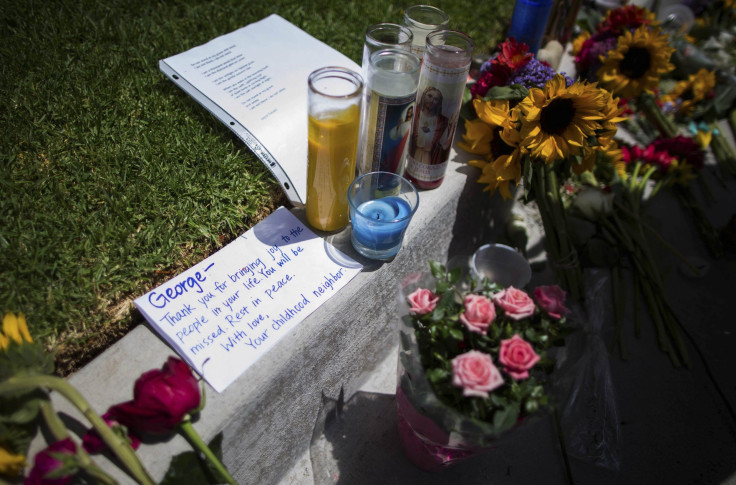Does Elliott Rodger's Isla Vista Killing Spree Offer Any Lessons About Therapy Or Threat Assessment?

For those in the mental health field, the mass killings in California last week prompted discussions of how better to prevent such tragedies. But so far, therapists and law enforcement specialists have more questions than conclusions.
Most concede that Elliott Rodger seems to have fit the image of a mass murderer: the loner with an overpowering sense of personal grievance.
Yet such information is of little value in predicting the kind of explosive violence that led to six murders and his own suicide, experts who spoke with International Business Times contend.
“This is one of the biggest challenges that the field of psychiatry and psychology really wrestles with, because it’s possible to identify a number of risk factors either for violence toward others or violence toward oneself,” said Dr. John Oldham, chief of staff at the Menninger Clinic in Houston. “A fair amount is known about that, but it does not mean necessarily there is going to be any degree of certainty that you can count on to identify it in a particular person.
“You don’t know -- even though there may be risk factors -- whether this is a person who is going to lose control,” Oldham said.
Even the FBI does not have a mass murderer profile.
That data gap complicates the options available to those involved in treating or who otherwise interact with mentally ill people when they suspect there is a potential for violence.
Risk factors include a history of having been bullied, failure to make meaningful connections with other people, or a family history of mental illness. A person who has violent fantasies or impulses, or a preoccupation with revenge, or impulsivity or paranoia, all increase the likelihood of violent behavior – but they do not necessarily predict it.
“There are large numbers of people who have all these risk factors and will never behave in a dangerous or violent manner,” said Dr. Victor Schwartz, medical director for the Jed Foundation, an organization that promotes mental health of American college students. “As a therapist, you would want to both get a sense of the person’s current state (how agitated or irritable or disconnected from reality might they be) but also get as much history as you can from the person and from others as well when possible.”
In the field of "threat assessment," which is dedicated to studying school shootings and other school-based attacks, notable outcroppings in personal histories is known as “leakage.” An individual may indicate his distress long before the crime is committed, and many times this collateral information is a better indicator than any psychological test a therapist can give, said Dan L. Jones, director and chief psychologist at Appalachian State University in Boone, North Carolina.
Elliot Rodger created YouTube videos and a 140-page manifesto that shed light on his mind-set before the killings. Leakage can come in other forms that may seem more benign, according to an FBI report, such as seemingly offhand comments to family, friends or teachers that can be immediately minimized by comments such as, "I was just joking," or "I didn't really mean that."
Unfortunately, even if someone is identified as dangerously troubled, getting help is not easy.
“There are many impediments to care,” Schwartz said. “It is difficult to force care or particular interventions on people over 18, by and large.” There are also shortages of trained mental health clinicians and limited insurance coverage. “Also, clinicians only have as much information as people are willing to convey -- they cannot read peoples’ minds, and people, particularly [because] those people who are paranoid and mistrustful, are often very hesitant to reach out for treatment.”
Psychiatric commitment laws vary by state. Most include a requirement to show that the person poses an “imminent danger” to themselves or others. “That’s a hard threshold to meet,” Jones said.
The Rodger murders may lead to a push to amend psychiatric commitment laws, Schwartz said. But he thinks such an approach could be problematic.
“After an event like this, there is often a call to make it easier to force treatment or hospitalization on people,” Schwartz said. “It is an appealing idea on the surface, but if people’s rights are too easily removed, it might actually make people less likely to reach out for help when they need it for fear of being hospitalized against their will.”
For Gene Deisinger, deputy chief and director of threat management at the Virginia Tech Police Department, the legal system may not be the solution to prevent future tragedies.
“The law can knock down walls. Threat assessment is about building bridges, not because the law requires it but because it needs to be done,” Deisinger said. For example, he said, people should be discouraged from falling prey to the so-called bystander effect, in which they avoid intervention when they encounter a person who shows warning signs. “We have to differentiate a legal duty from moral duty we have toward each other,” he said.
Deisinger saw the terrible costs of failure at Virginia Tech in 2007, when a student shooter killed 32 people and injured 17 others. Could someone have built a bridge to Seung Hui-Cho, the Virginia Tech murderer? In fact, therapists and teachers had tried.
Even as professionals try to draw useful lessons from last week's horror, most of those interviewed by IBTimes acknowledged the limits of their powers. The only consensus was that having a troubled client who crosses the line into mass killing is every mental health professional's worst nightmare.
“The psychiatry community is grieving,” Dr. Melissa Deuter, a San Antonio psychiatrist who specializes in the care of young adults, said. Not only are mental health care providers limited in the services they can provide, but the general public has a misunderstanding of how therapy can prevent or predict violent events from taking place.
“It’s a tragedy of the system,” she said referring to Elliot Rodger’s psychiatric treatment, his parent’s involvement and how the authorities were notified when they suspected he turned violent. “They did everything they could do and it wasn’t enough.”
© Copyright IBTimes 2024. All rights reserved.












